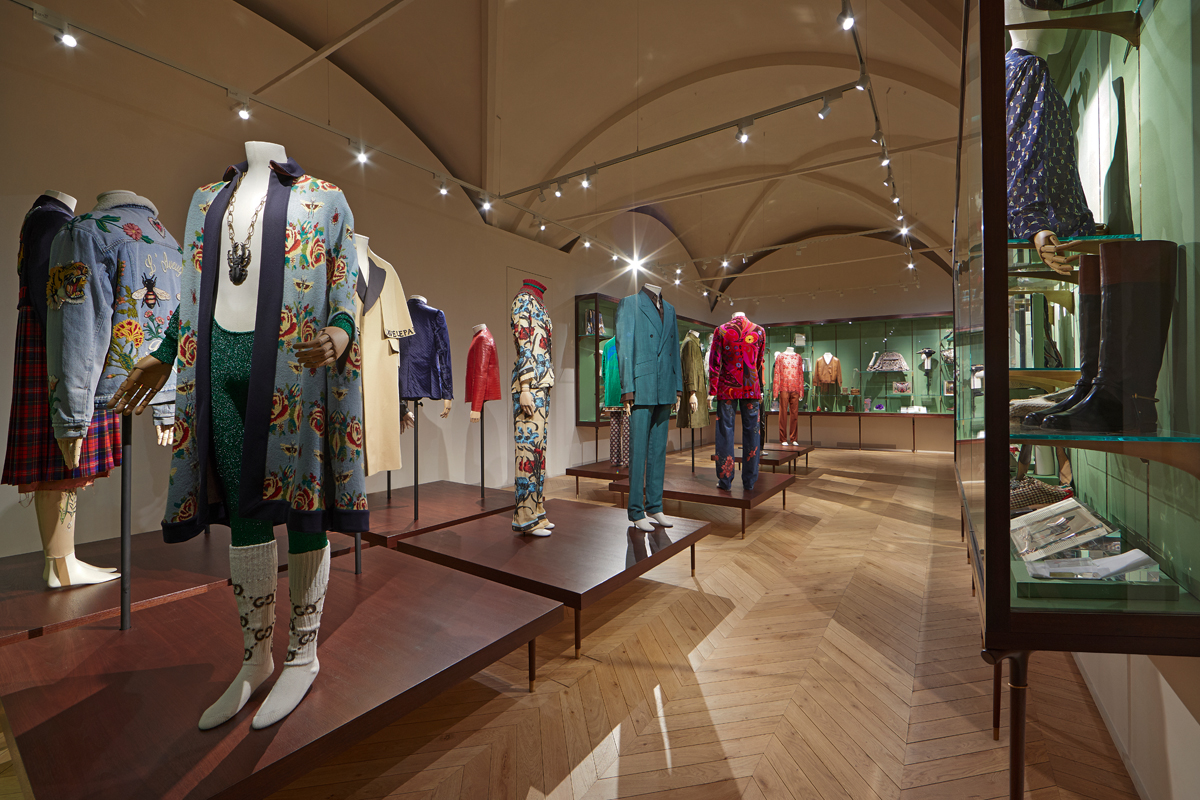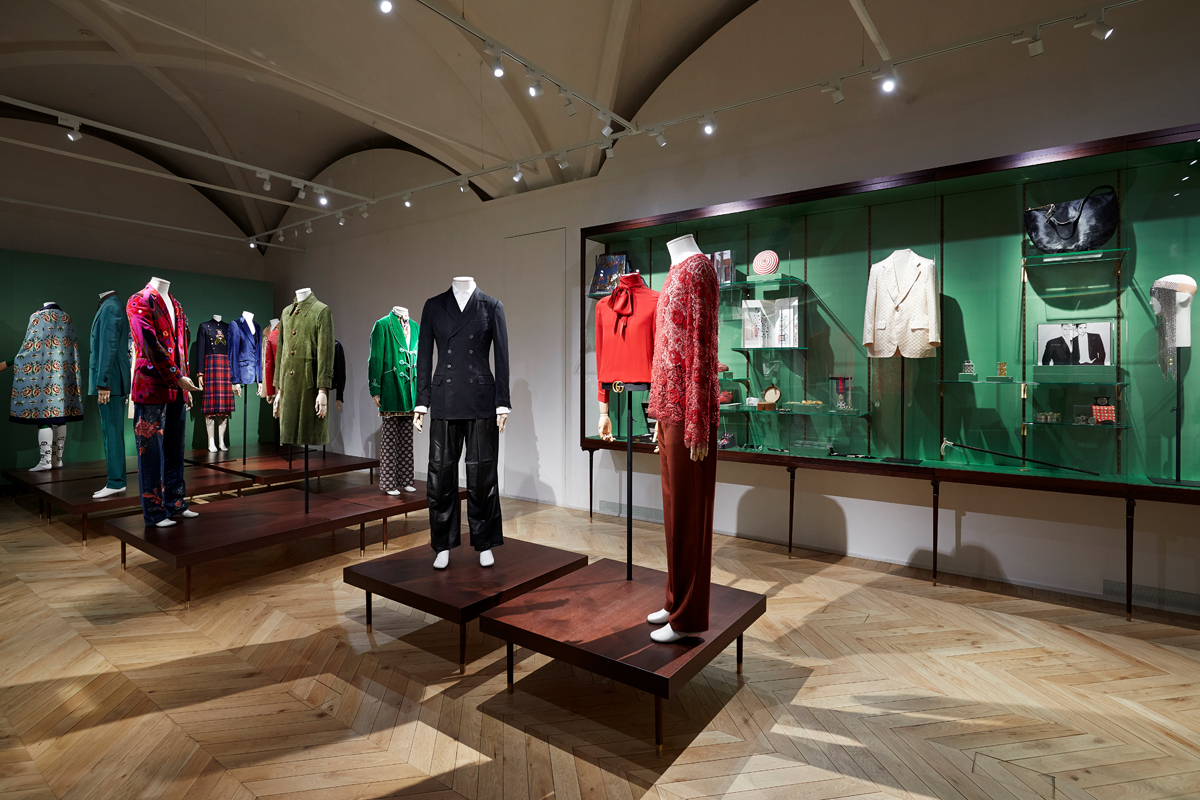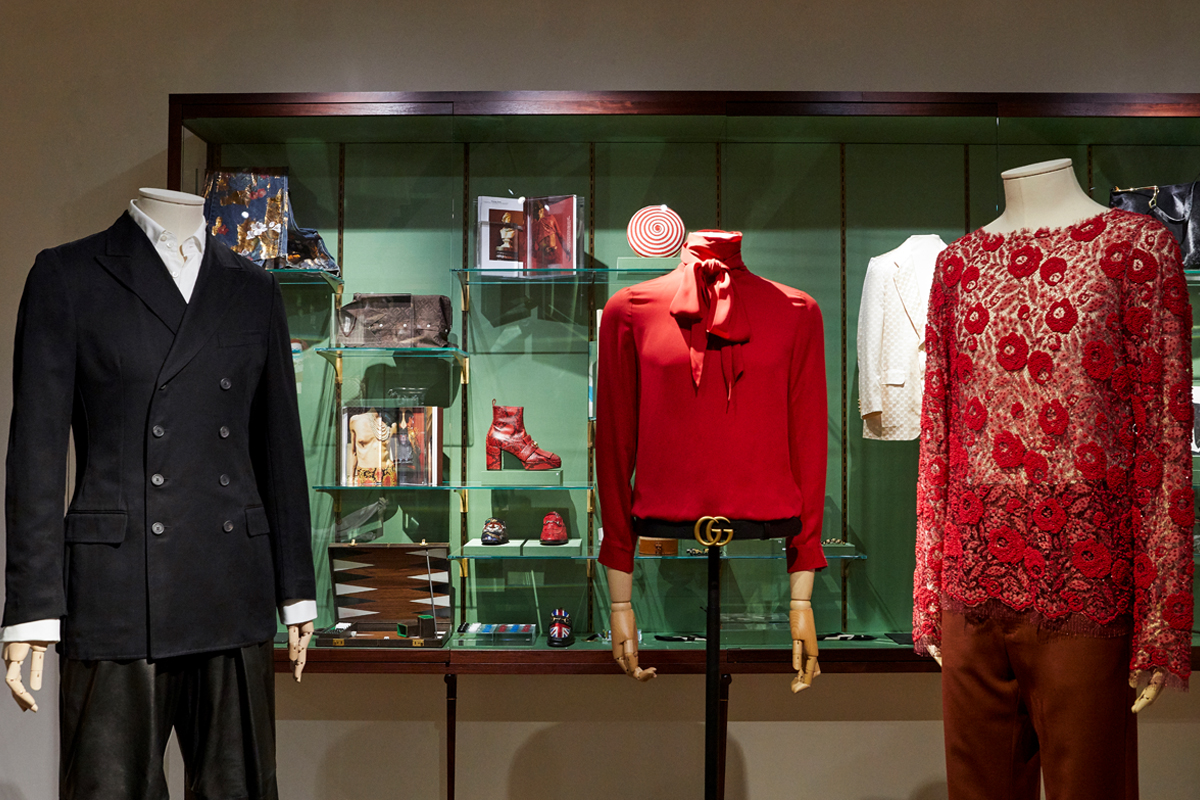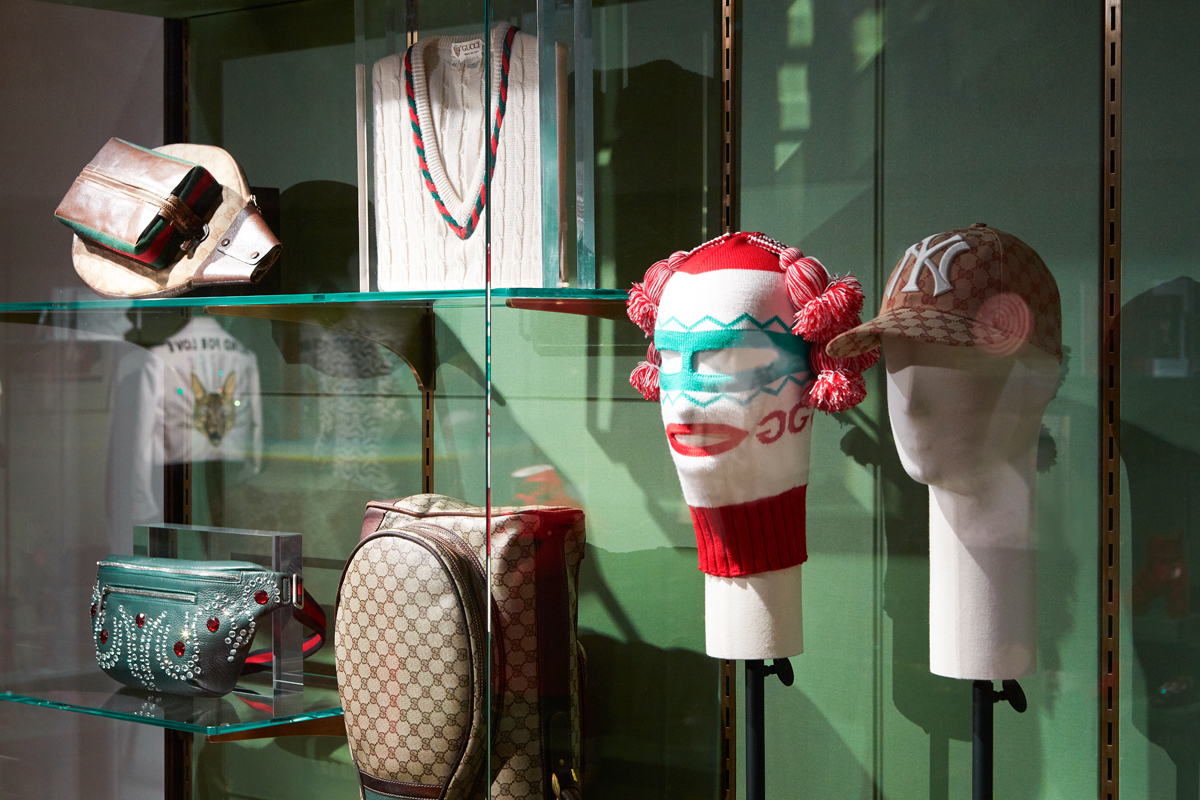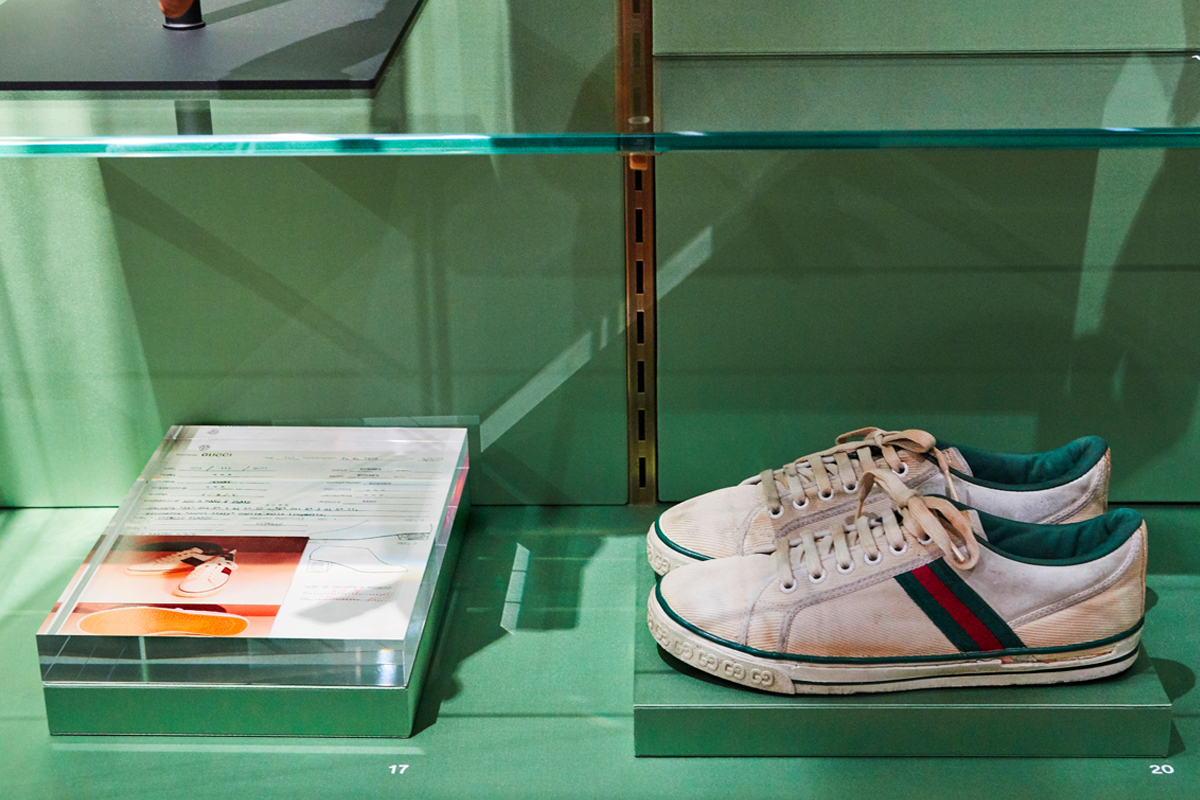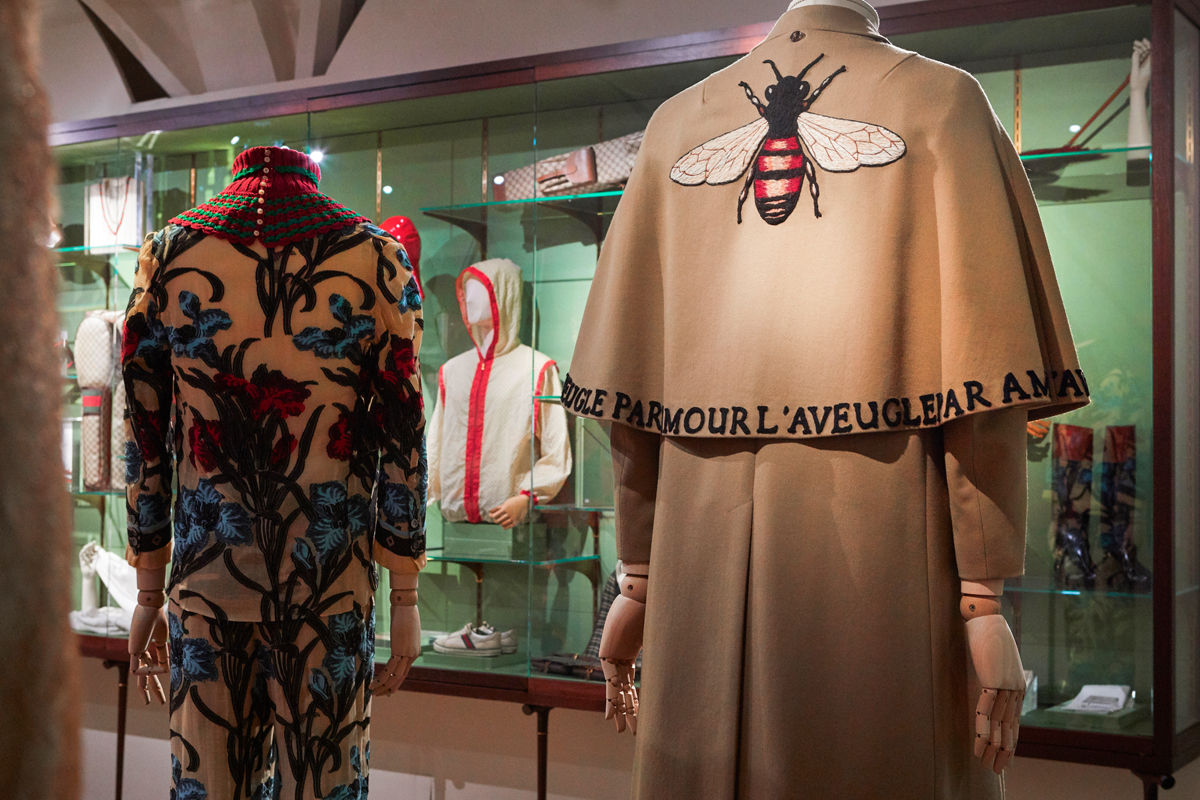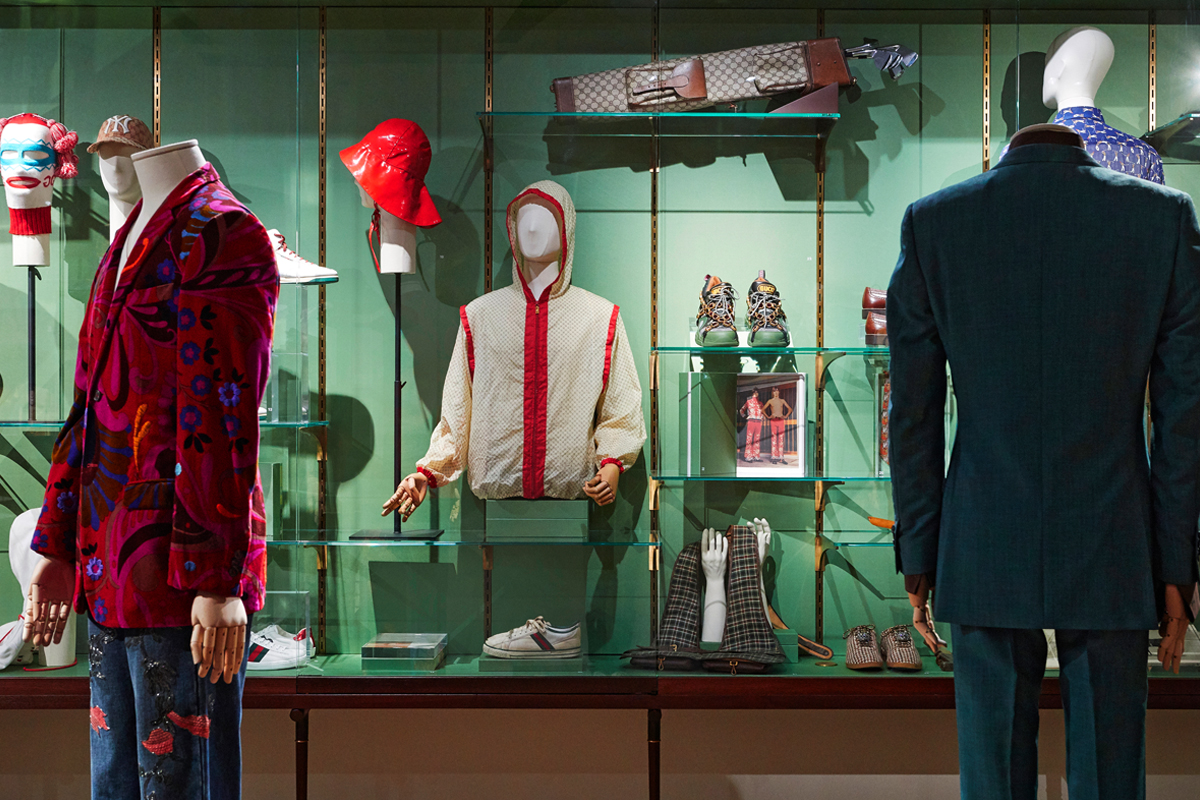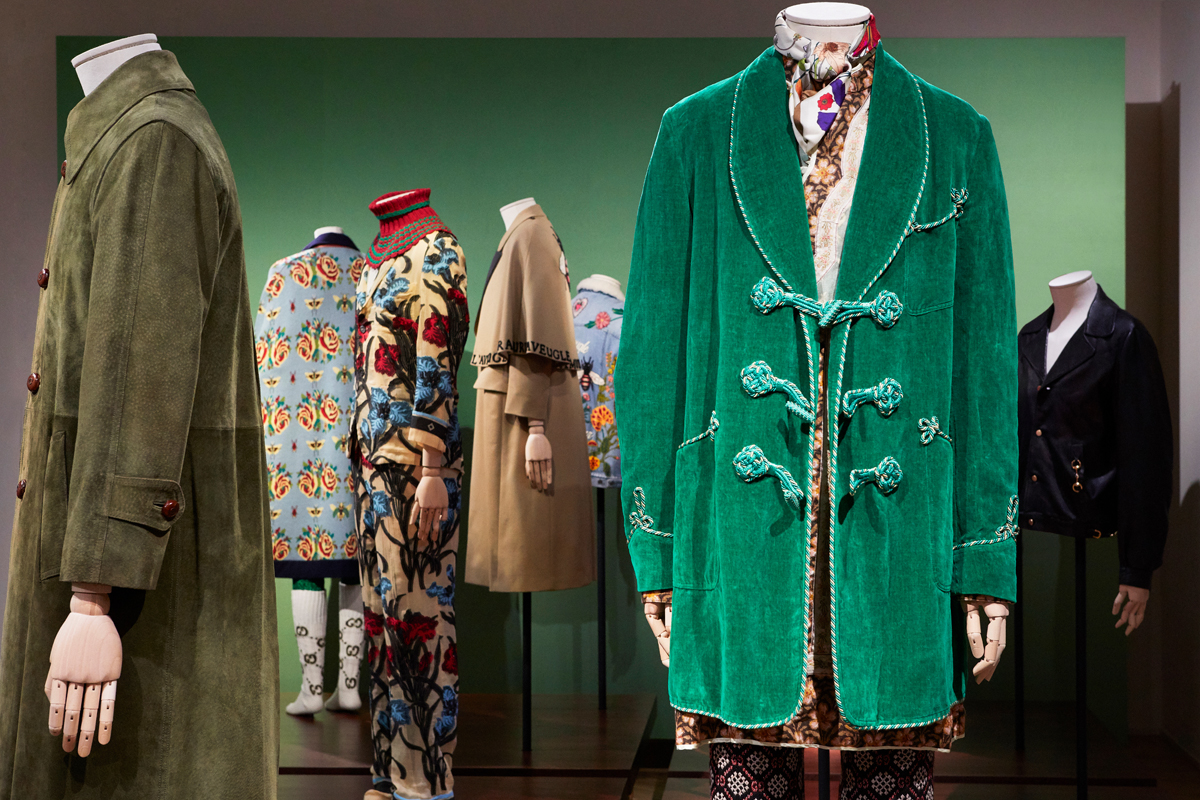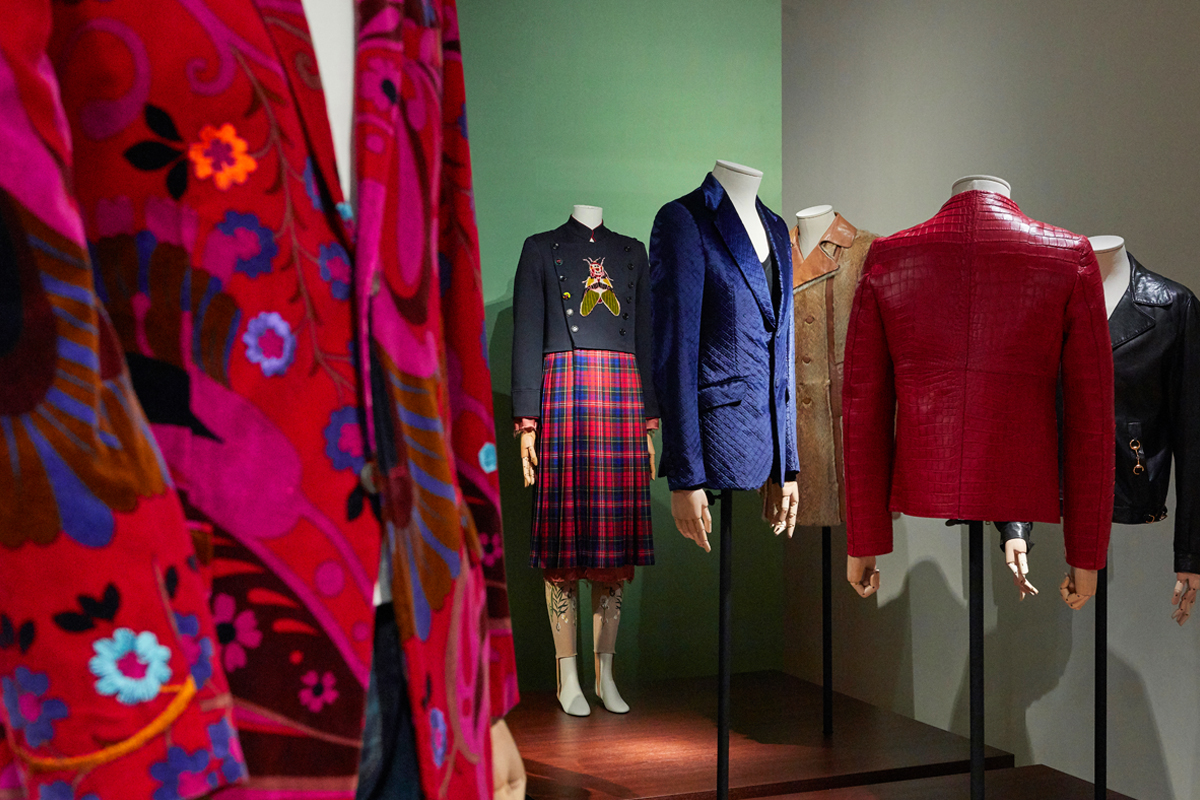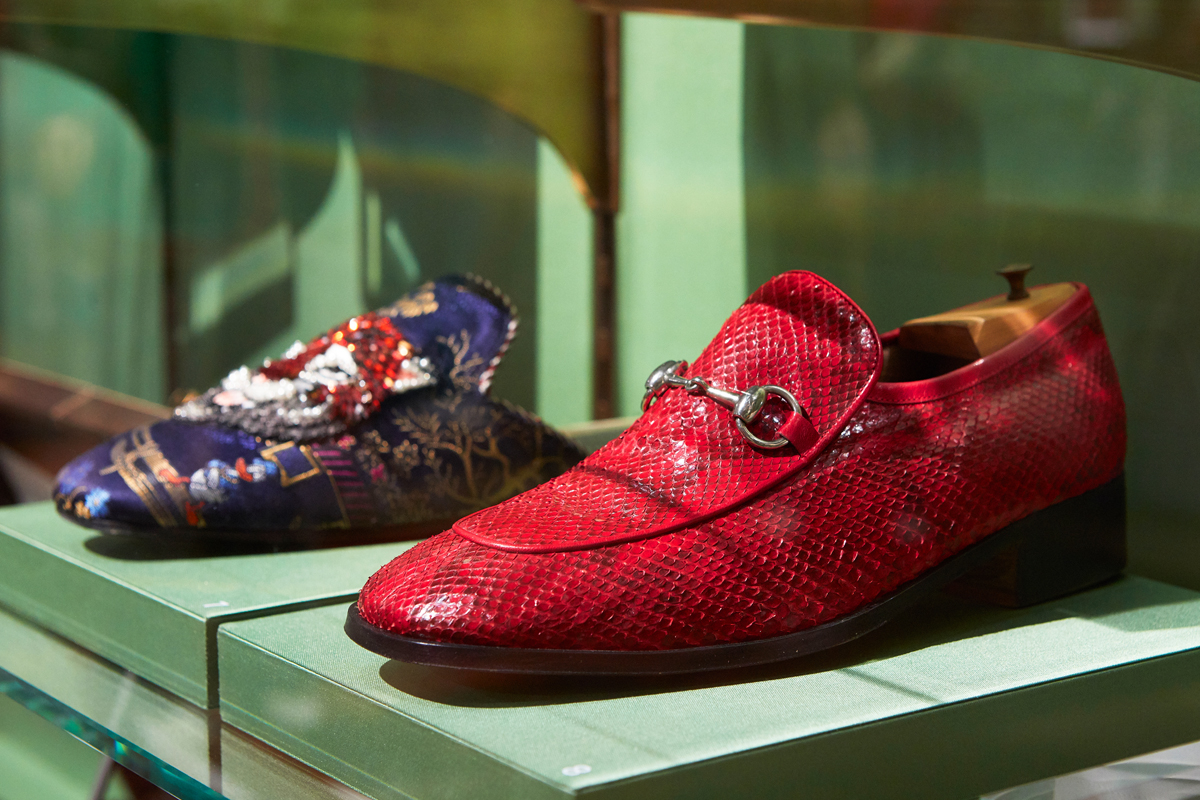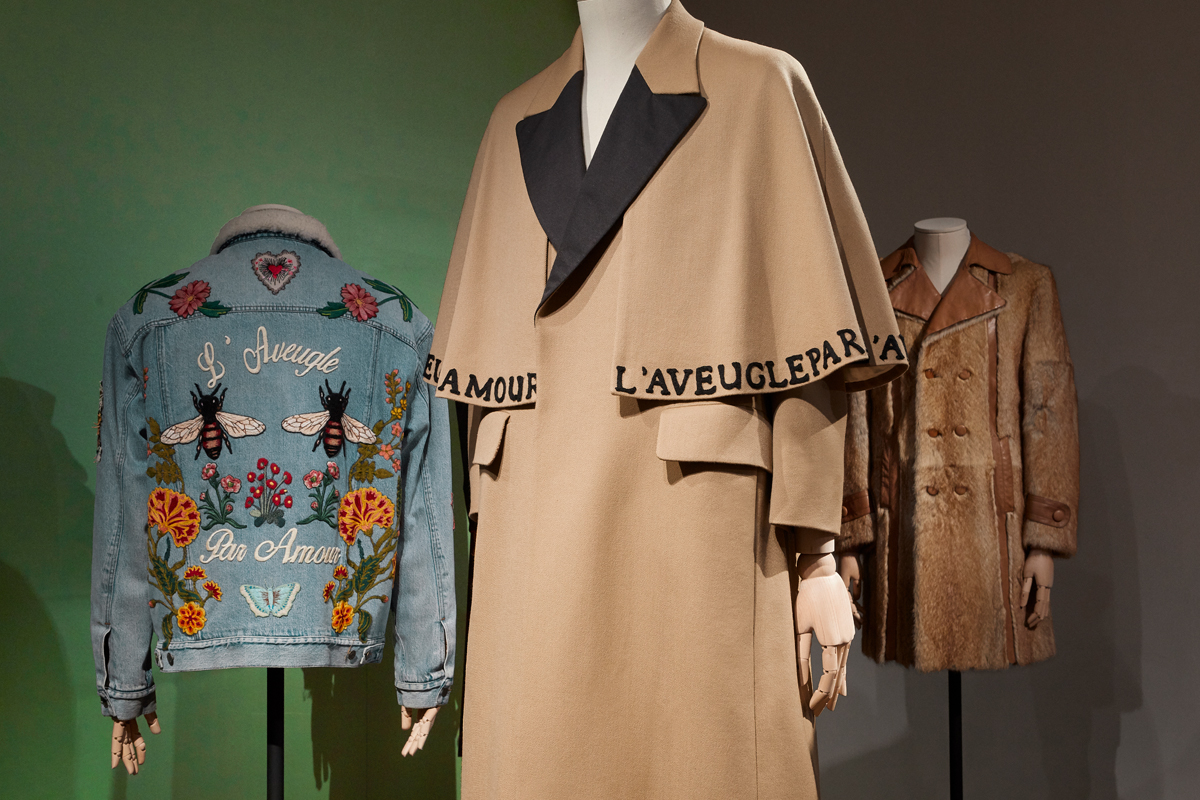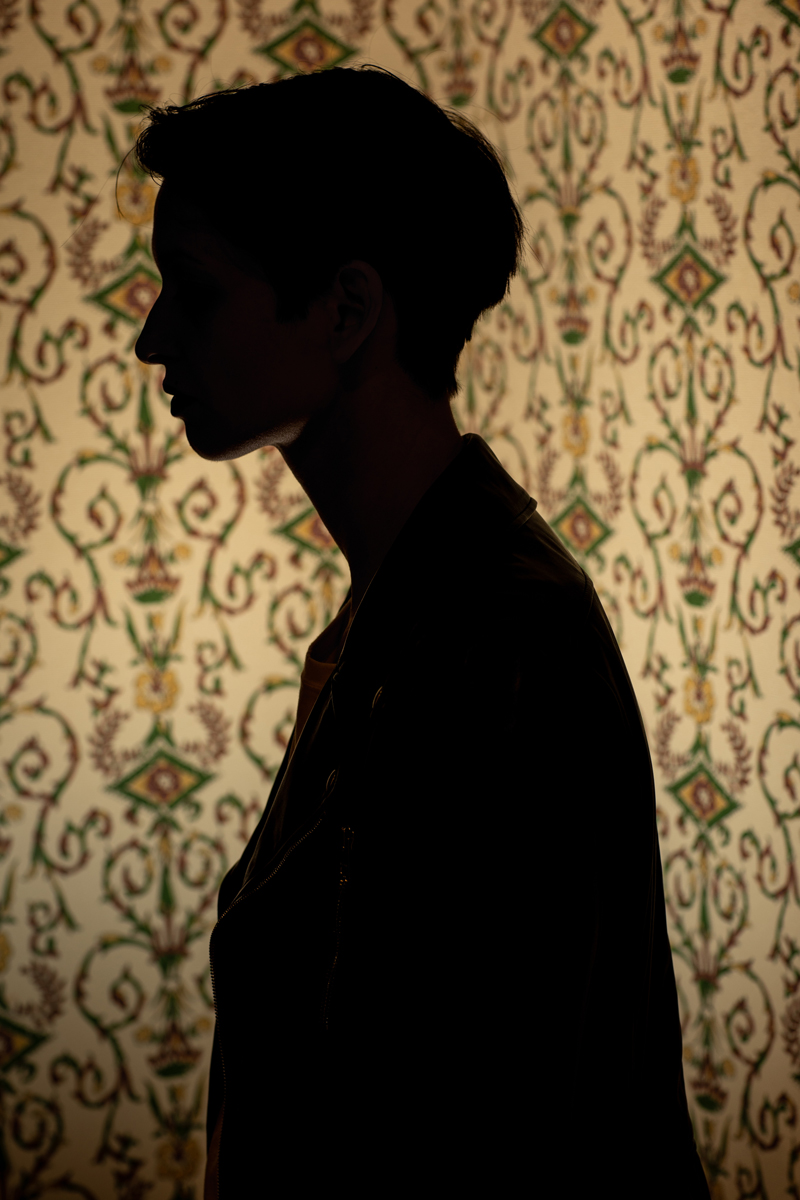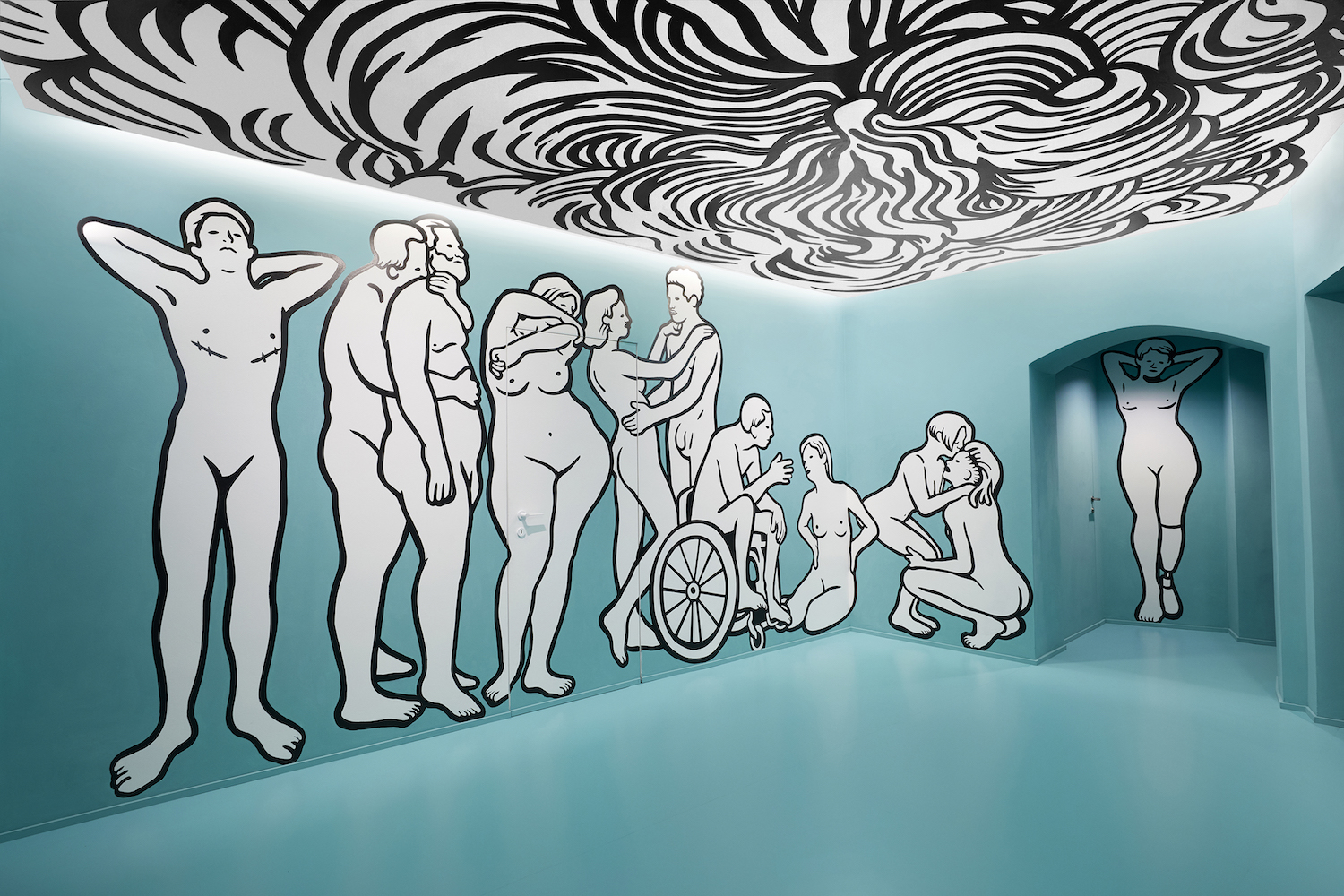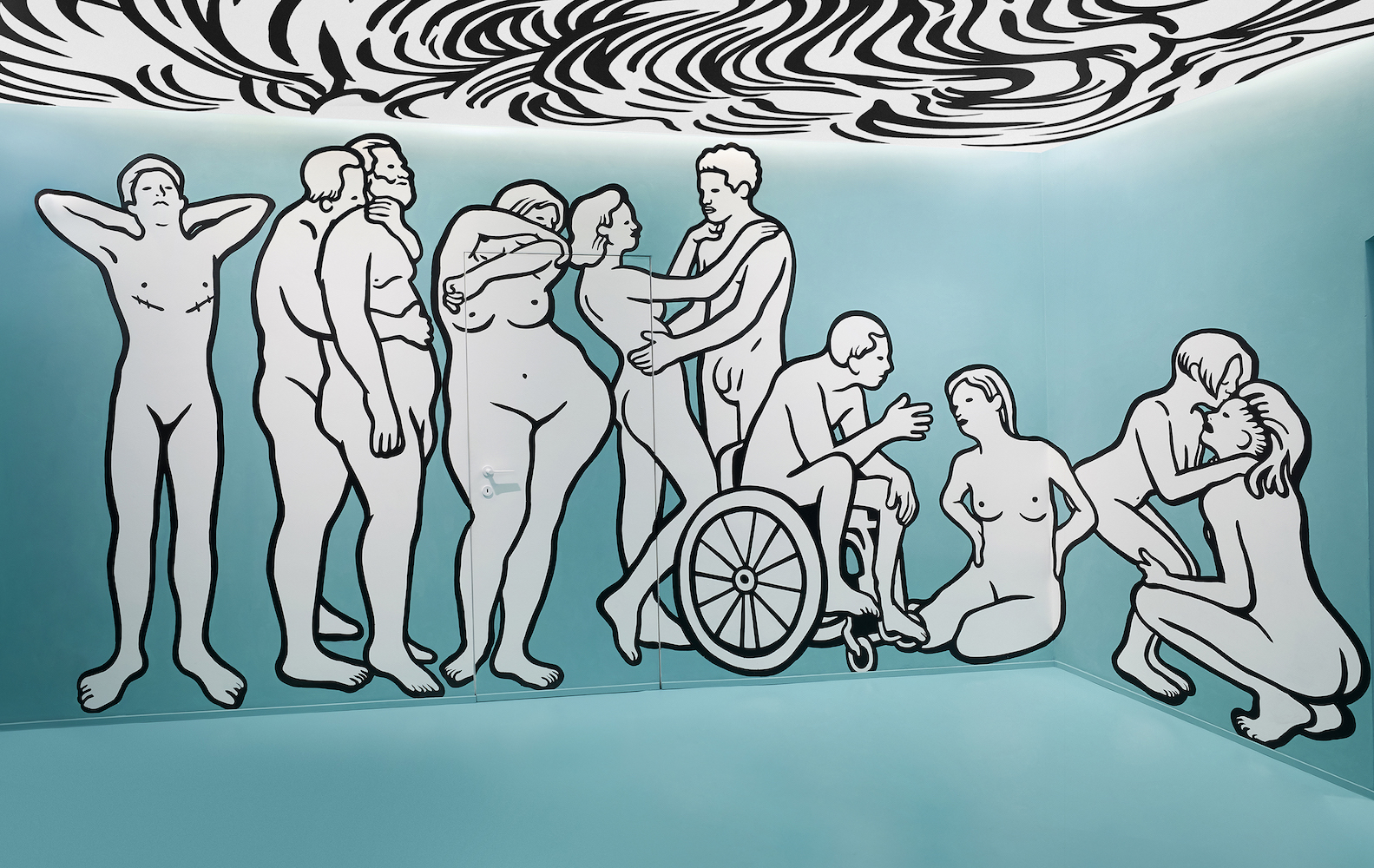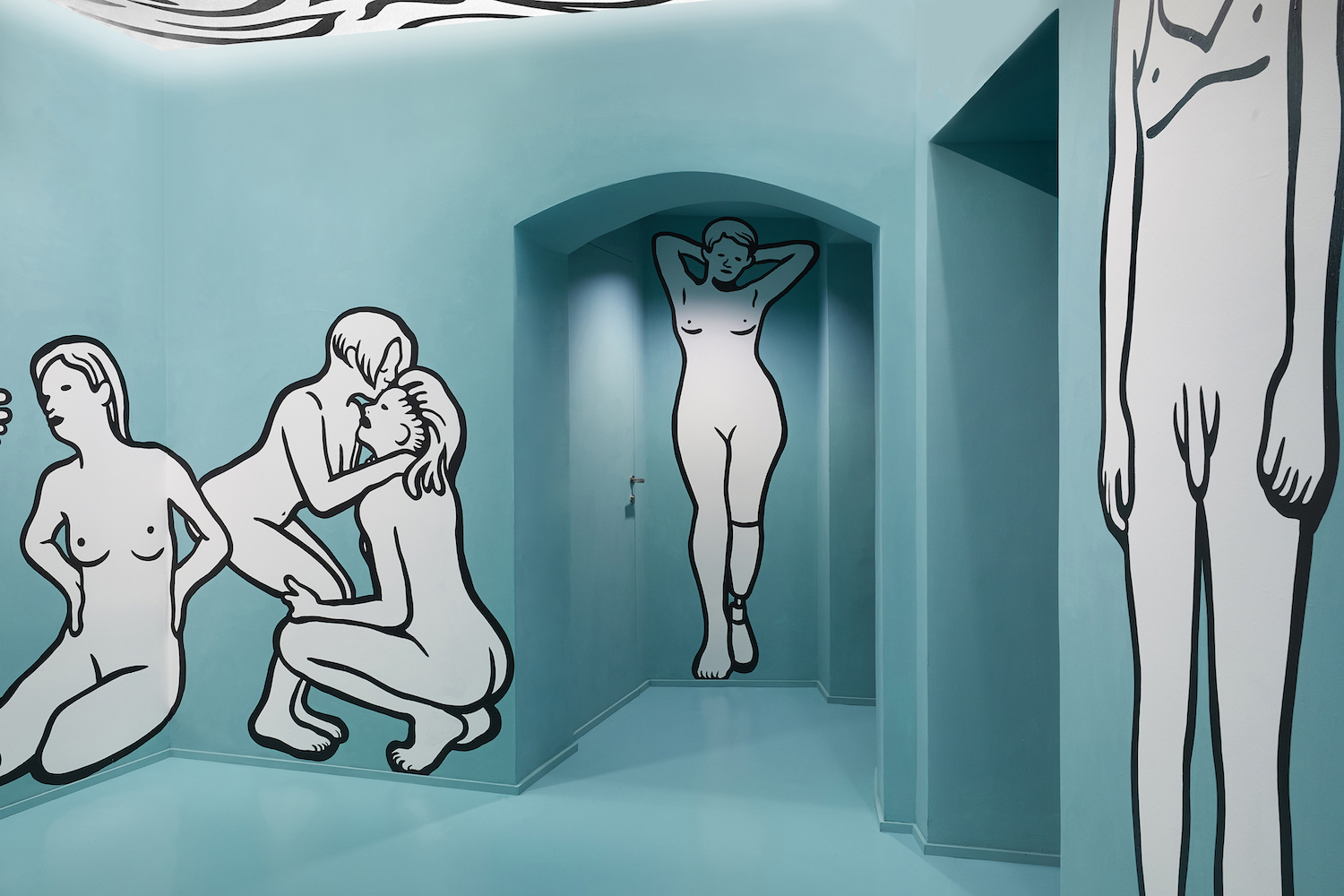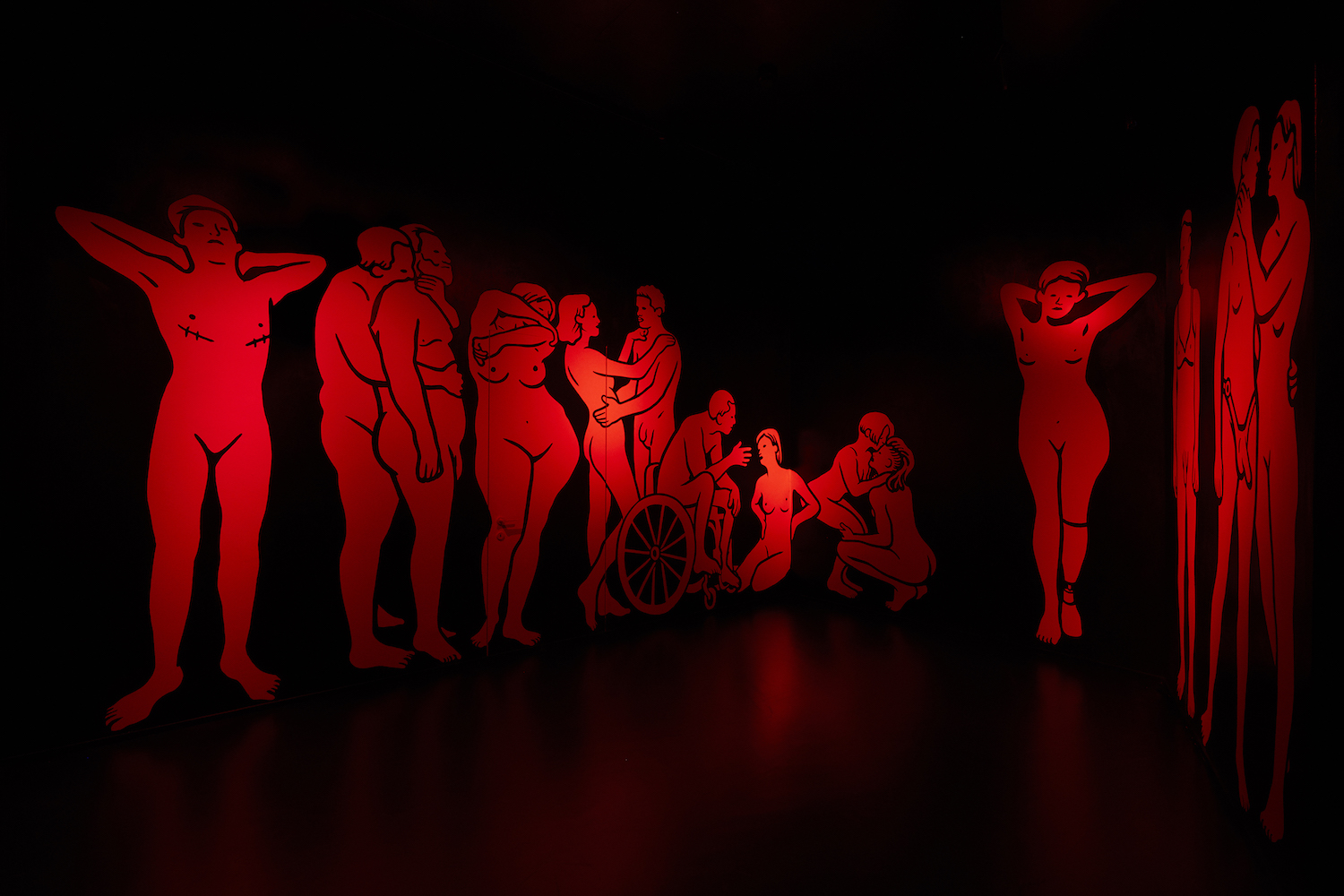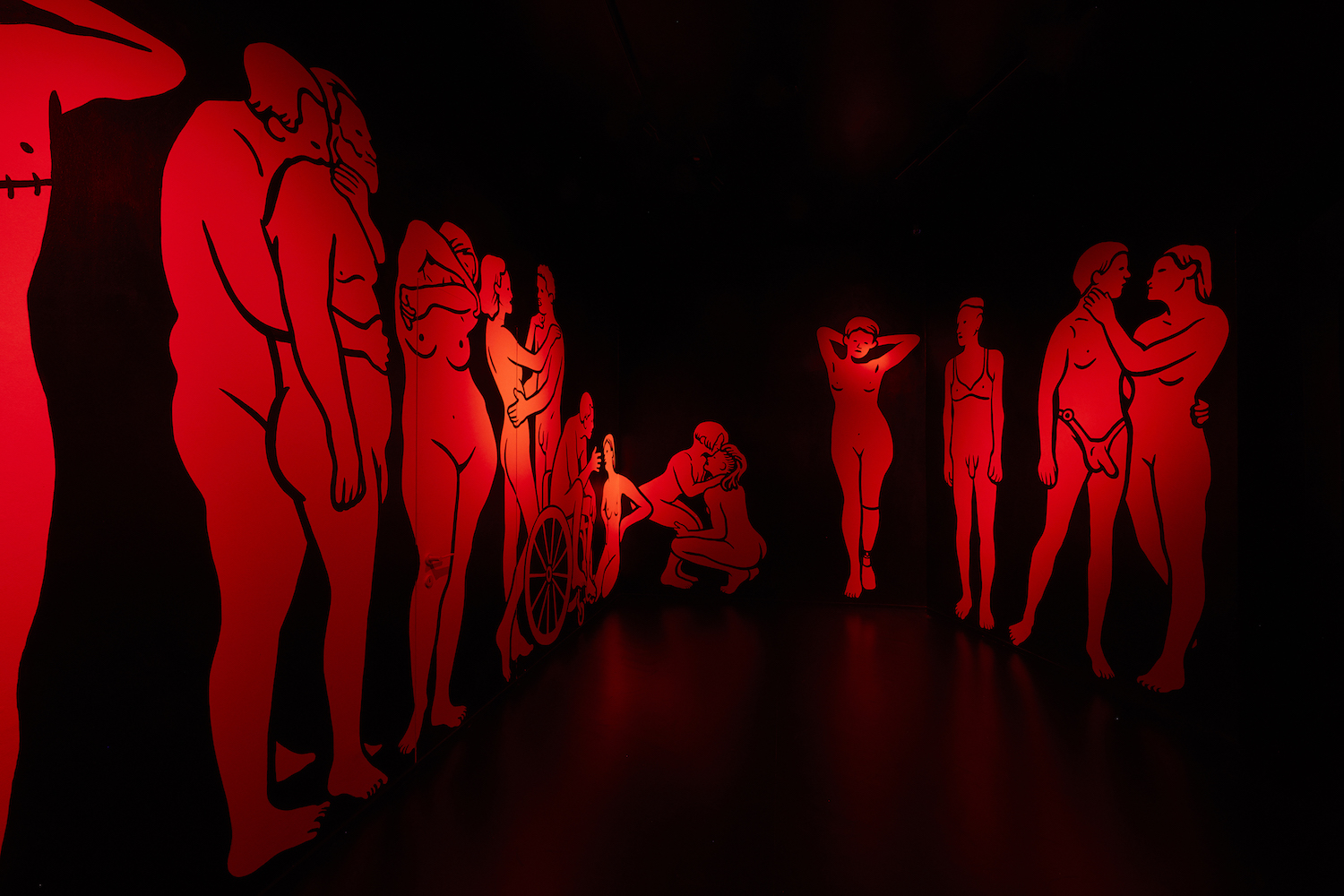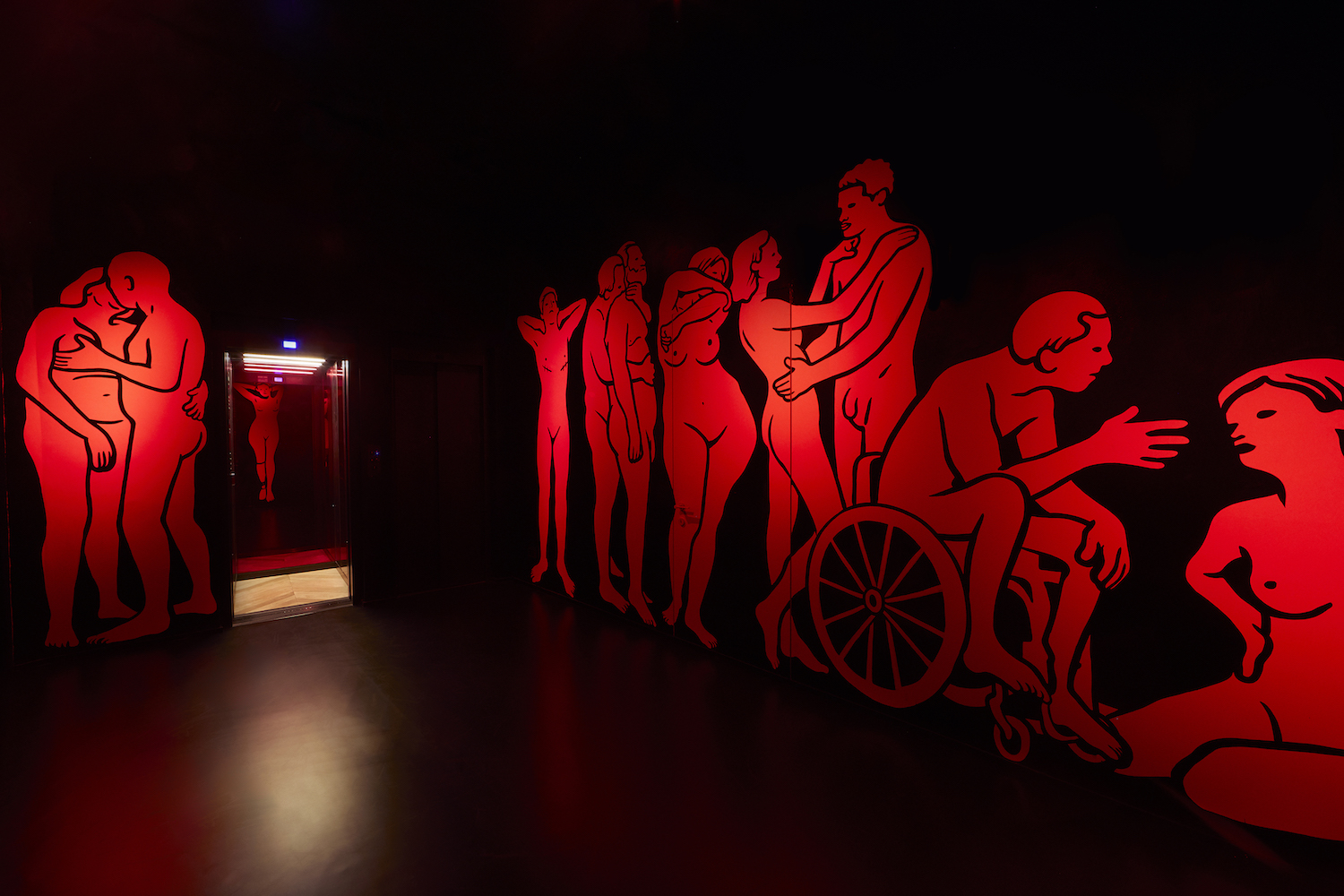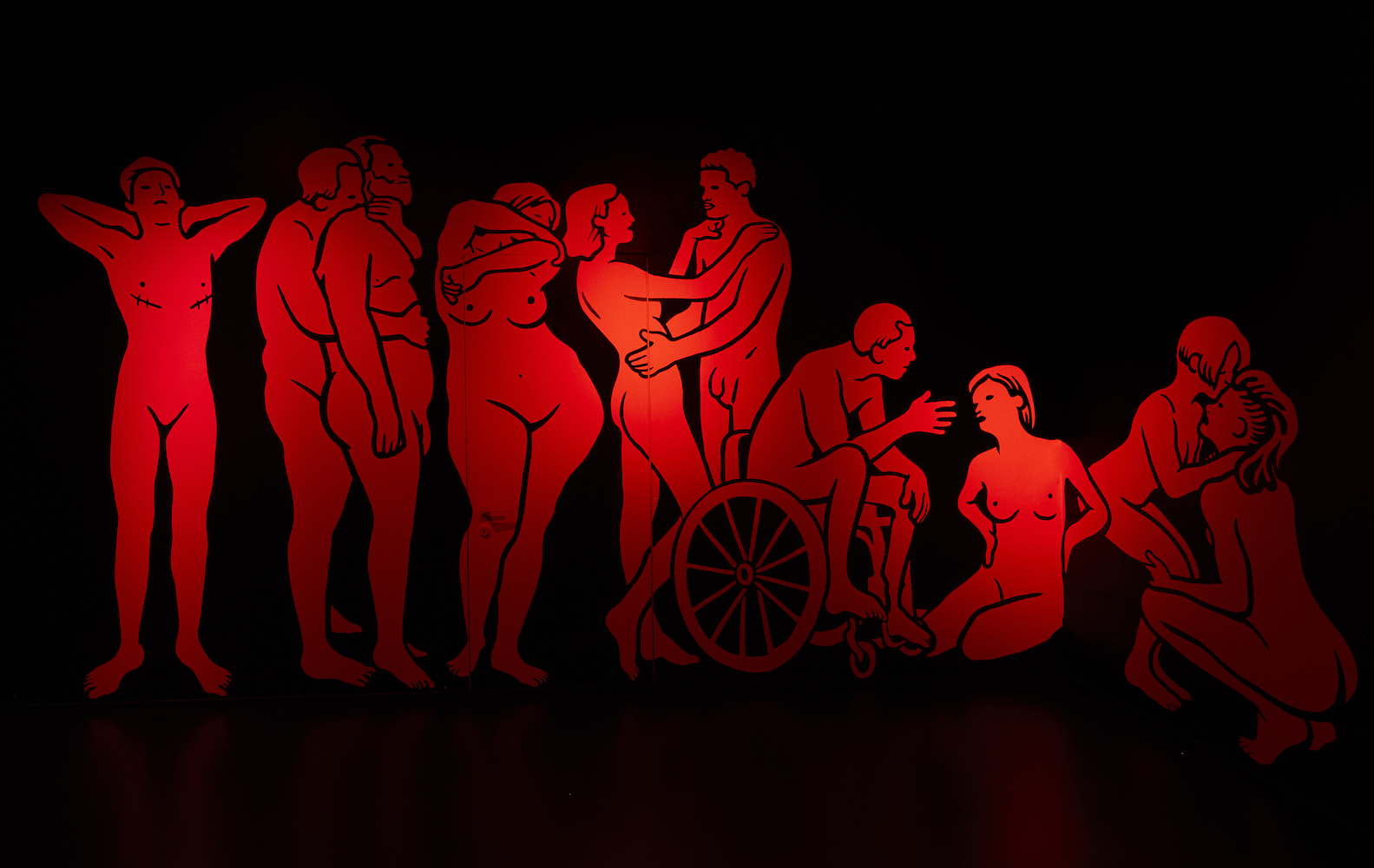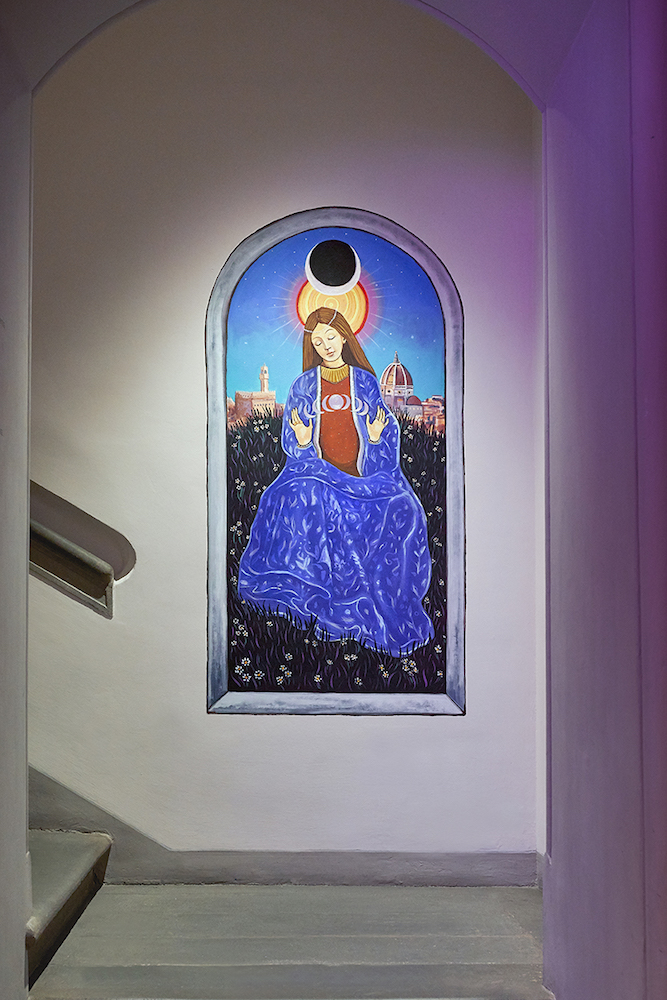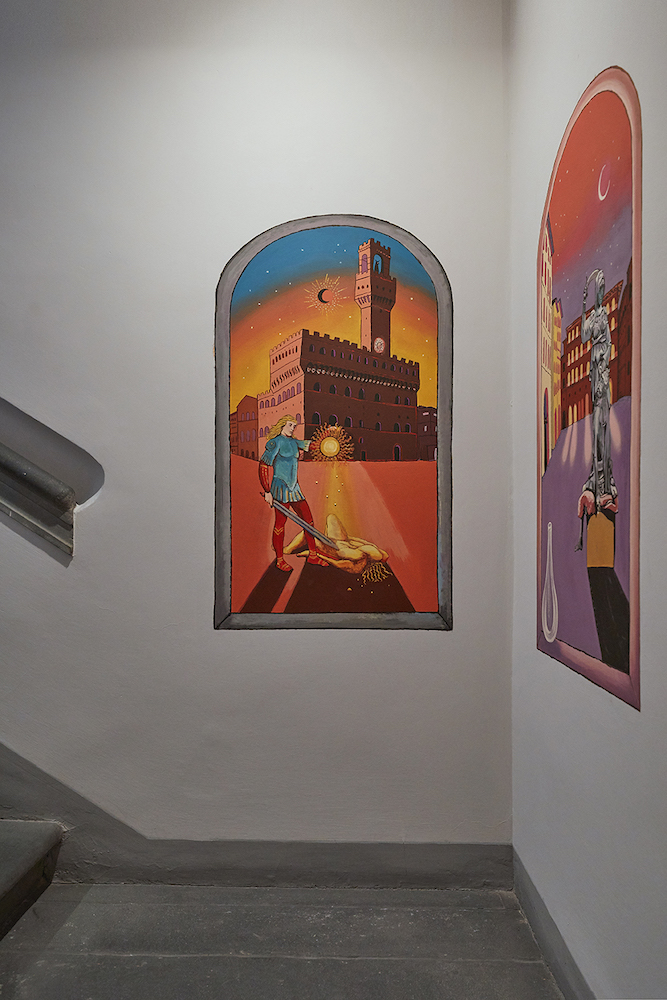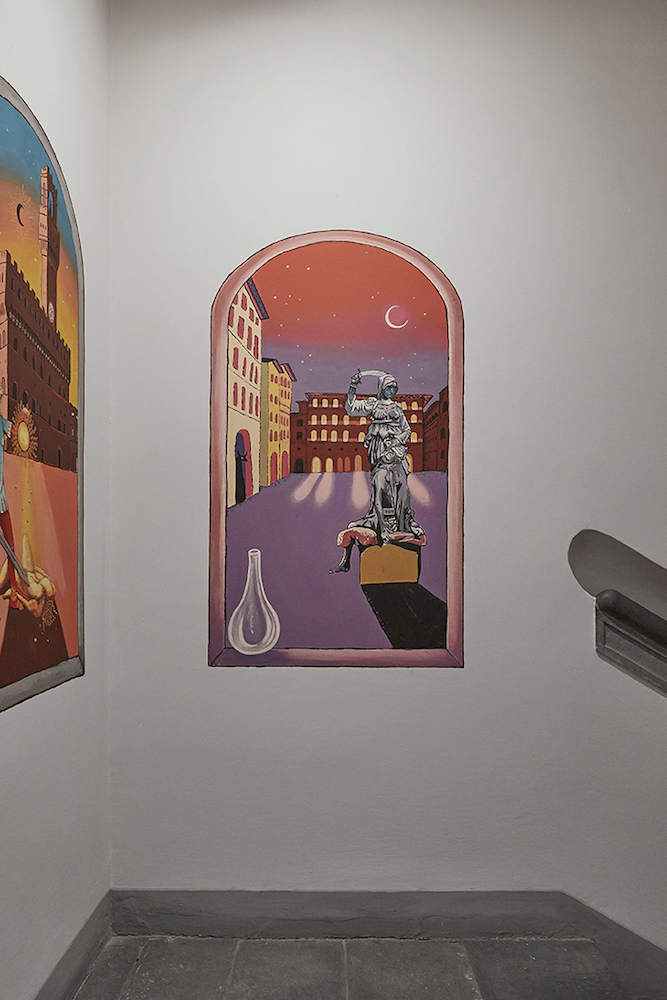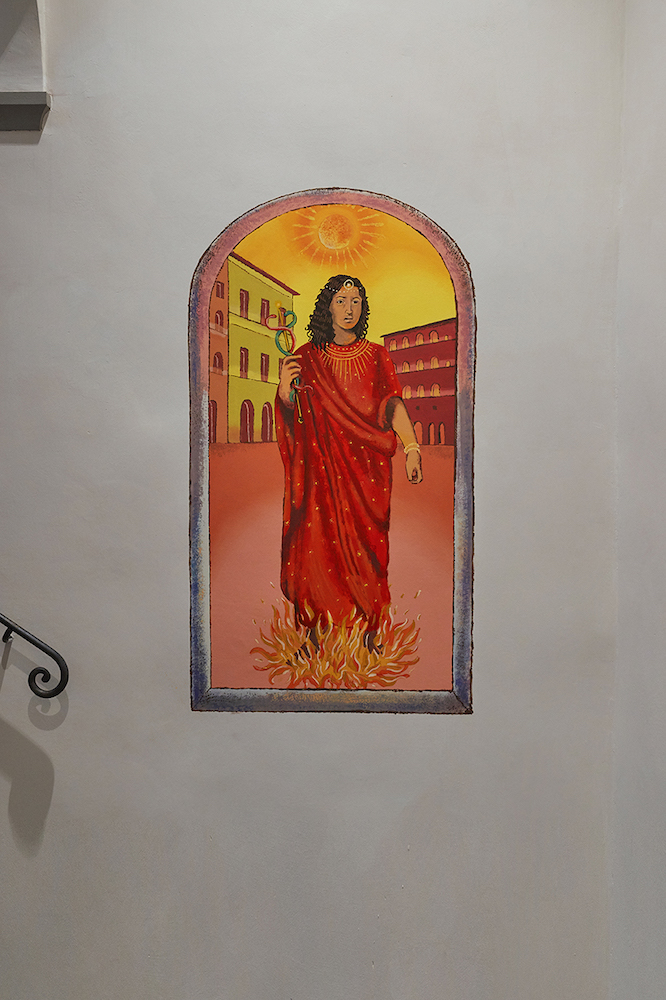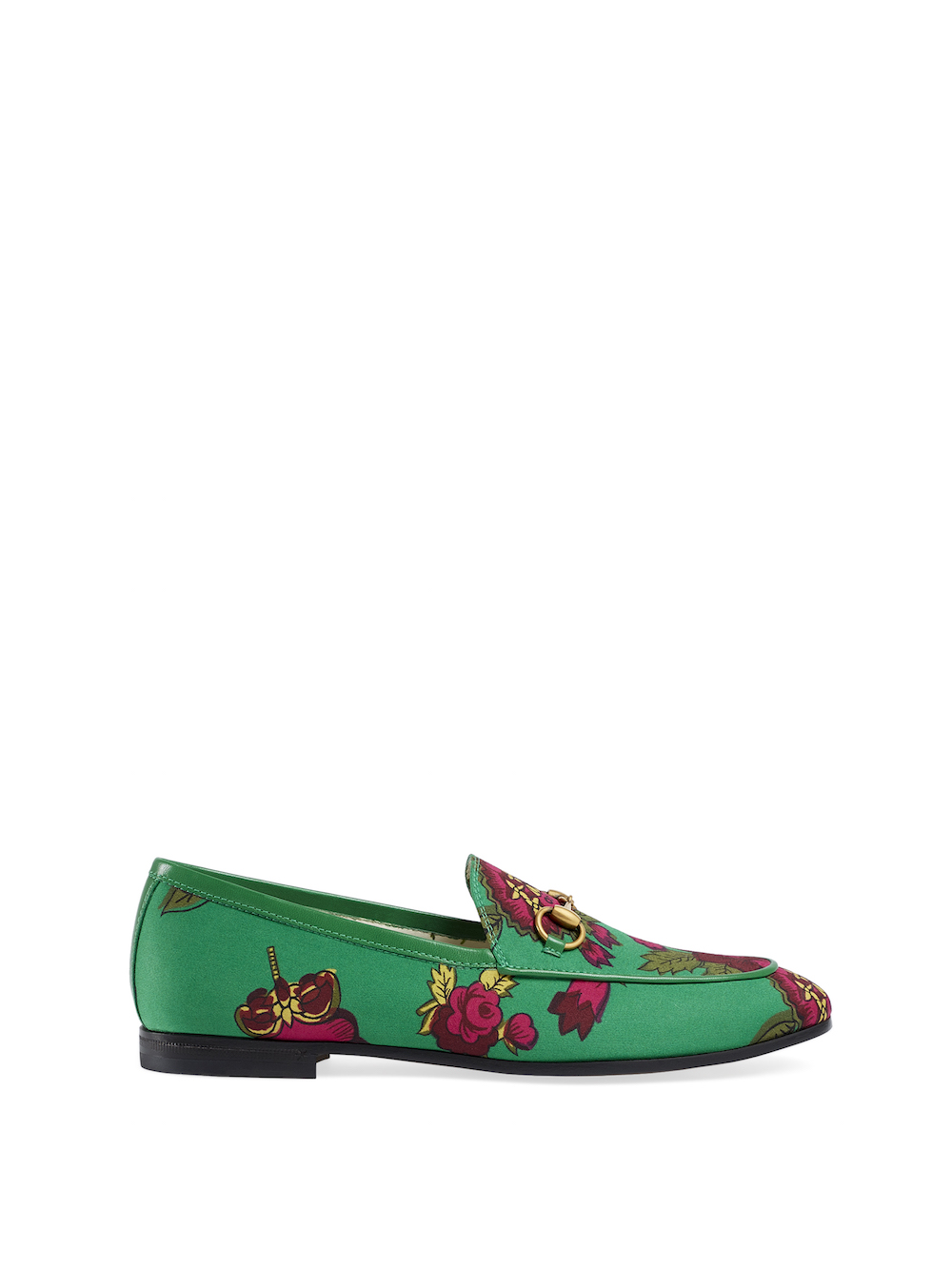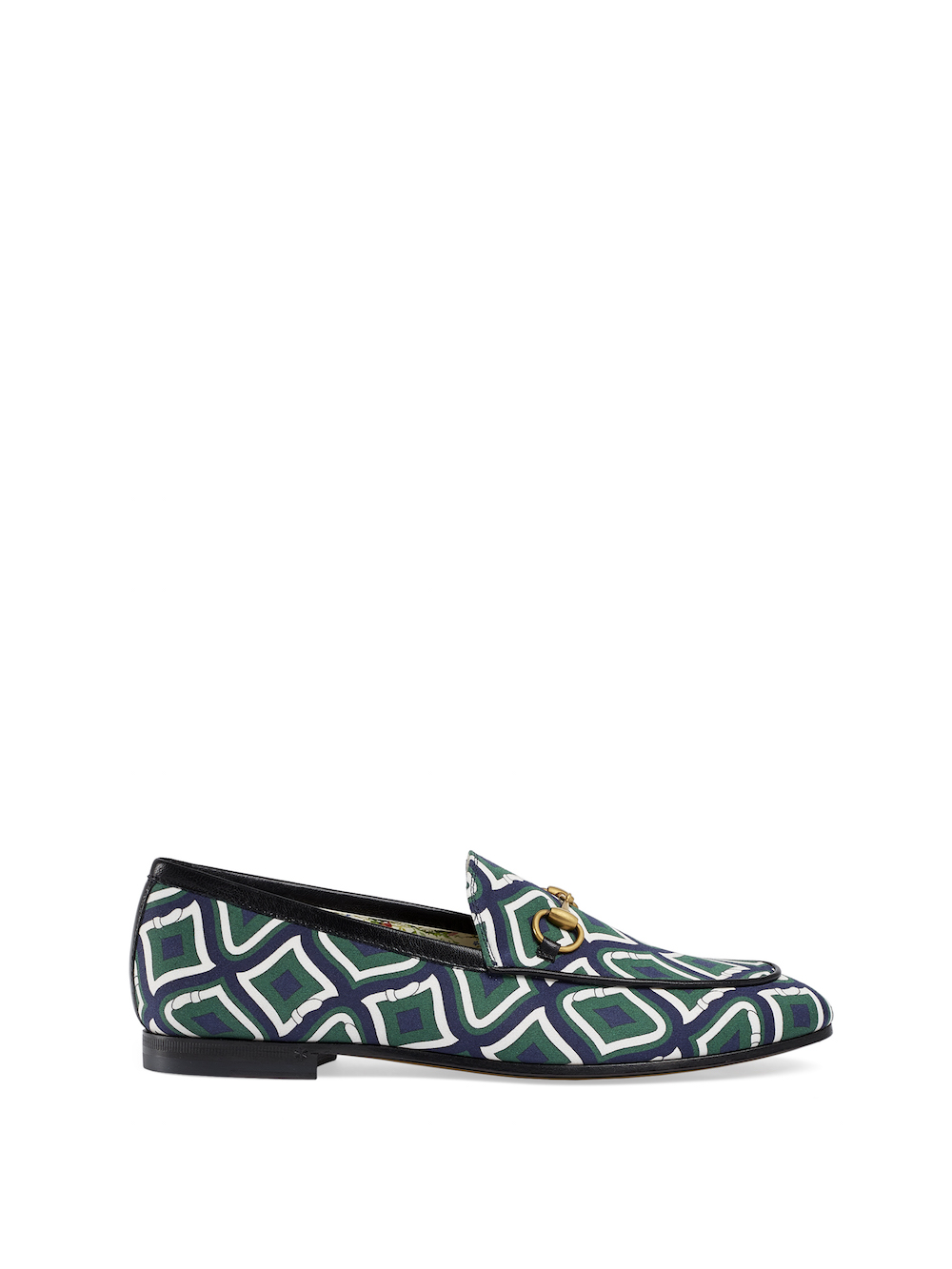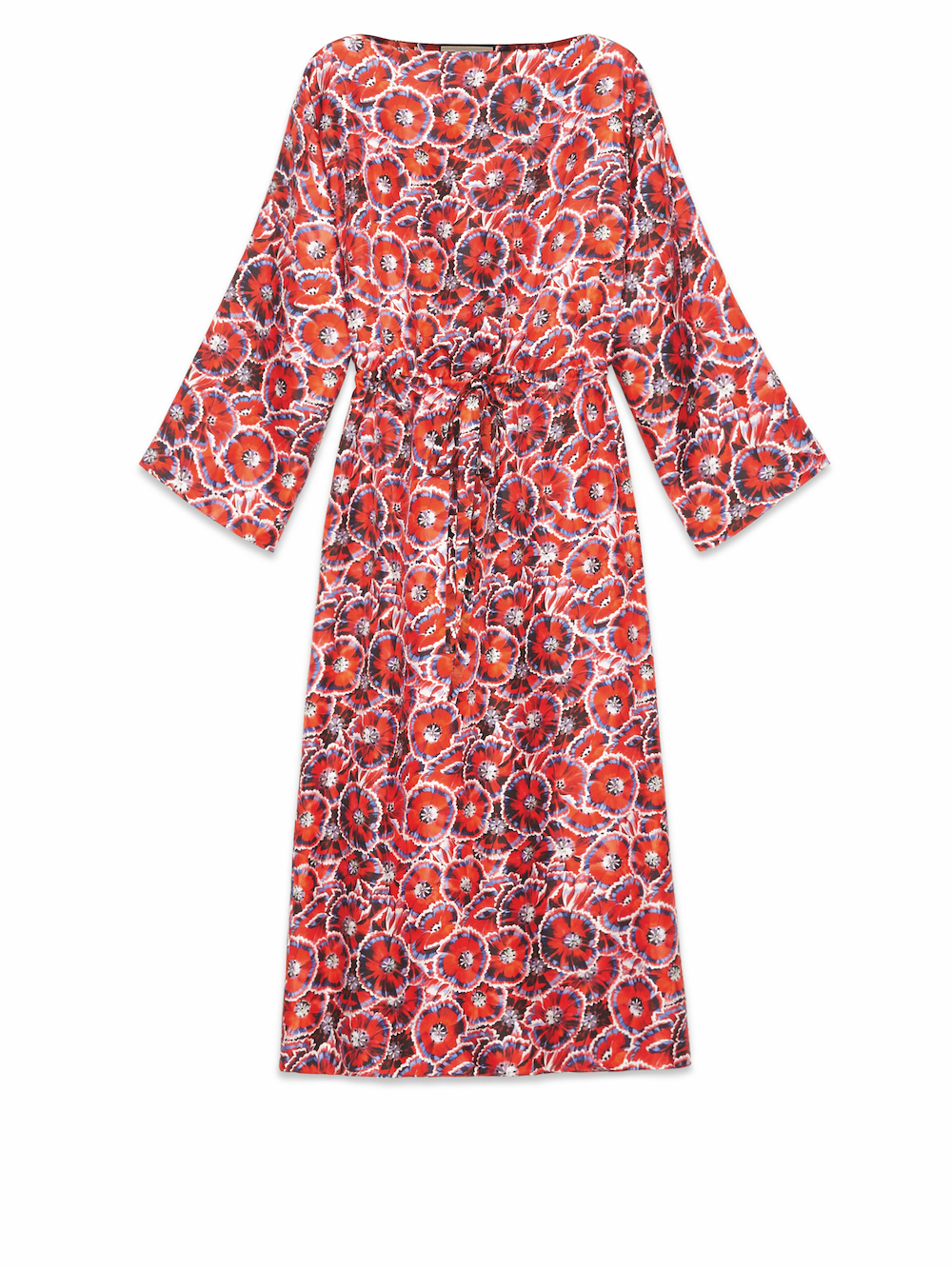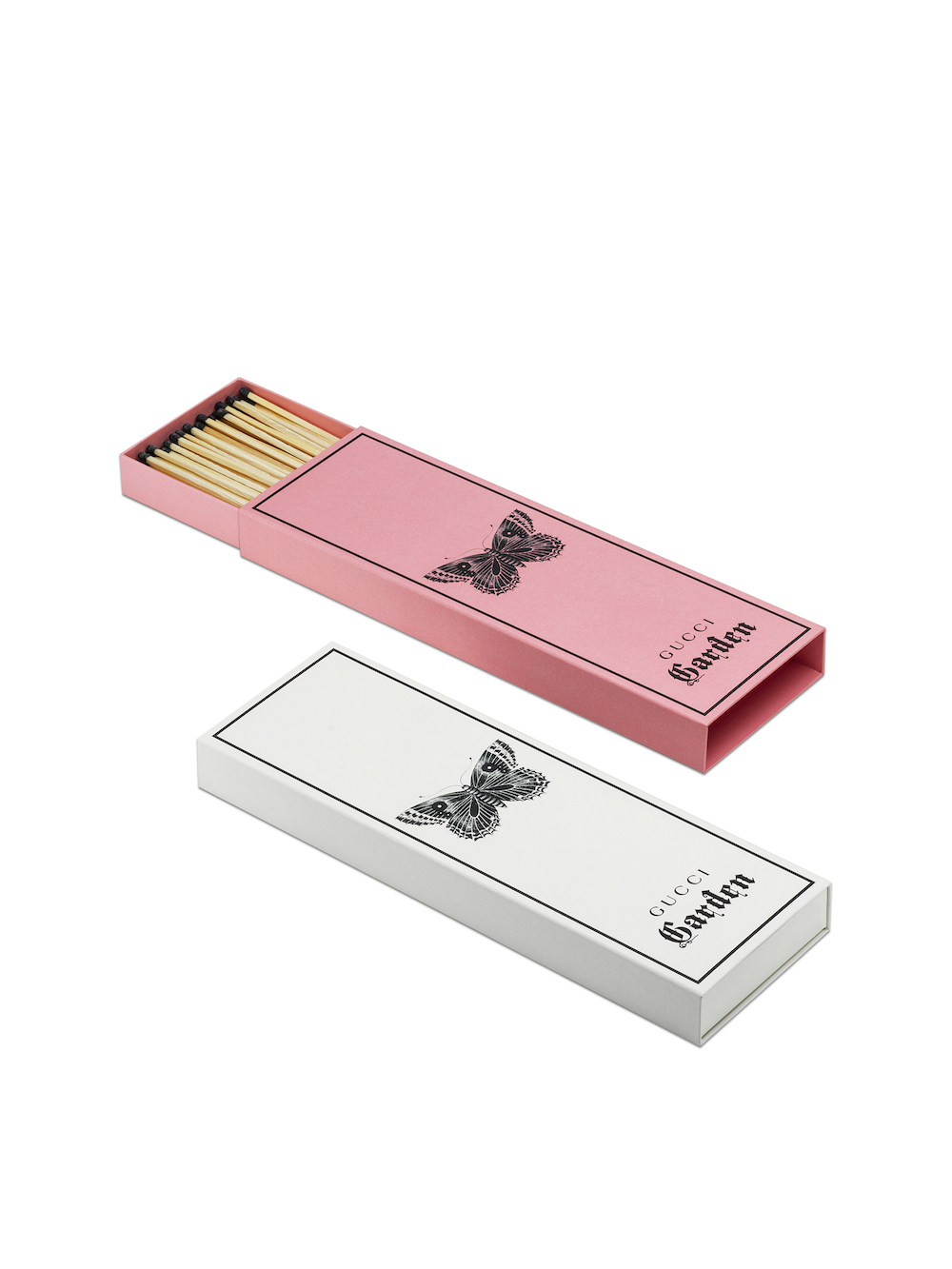Gucci Garden To Open A New Exhibition And Unveil New Wall Paintings In The Gucci Garden Galleria In Florence
Gucci opened a new exhibition in the Period Rooms and unveiled new wall paintings in its Gucci Garden Galleria. It coincided with Pitti Uomo 95, Gucci Garden, housed in the historic Palazzo della Mercanzia in Florence’s Piazza della Signoria. A private cocktail reception was held last January 8, the date of the opening of the men’s fashion fair, signaled the start of the exhibition and showcase of the new artwork.
Gucci Garden was conceived by Gucci Creative Director Alessandro Michele and features exhibition spaces curated by critic and curator Maria Luisa Frisa. The Period Rooms in the Gucci Garden Galleria, with a tribute to Björk and the House’s collaboration with her, hosted the new exhibition. Il Maschile – Androgynous Mind, Eclectic Body (The Male – Androgynous Mind, Eclectic Body) is curated by Frisa to demonstrate how Gucci has interpreted and defined Men’s fashion over the years. It takes a deep dive into the subject, making use of the Gucci archives, as well as presenting a close study of a red silk shirt with a bow tied at the neck that Michele included in his first Men’s show (for Autumn/Winter 2015). The shirt was a poetic gesture that in its vivid simplicity spoke of clothing the contemporary body and demonstrated that Men’s fashion is a field with great unexplored potential. It also marked the beginning of the House’s overt engagement with the idea that today gender is a fluid idea.
The reflections on masculinity in this exhibition trace the outline of the body. Gucci has been revisiting and refining its concept of masculinity since the 1960s, and its various creative directors, from the Tom Ford era to the present, have all expressed their own visions. Il Maschile – Androgynous Mind, Eclectic Body meditates on masculinity and maleness according to Gucci through a collection of clothing, objects, accessories, images, books, magazines and video documents. It maps a landscape that combines eccentricity and immediacy, and the formal and the erotic.
The exhibition’s subtitle, Androgynous Mind, Eclectic Body, expands our horizons and connects mind and body in interesting ways. It does this in part by associating an adjective (“androgynous”) typically used to describe the body, with the mind, giving substance to the intangible. ‘A great mind must be androgynous,’ wrote English poet Samuel Taylor Coleridge in 1832. He was pointing out that a creative mind by definition must be able to embody characteristics of both sexes. The eclectic body enters into dialogue with this mind and remains free of constraints — the conversation plays an active role in updating the concept of masculinity.
The selection of publications on sale in the ground floor boutique of Gucci Garden always strongly supports the items on display in the Period Rooms. Additionally, a wide range of books and magazines about Florence from the 1960s to the 1980s are on display and available for purchase. These emphasize the cultural vitality that flourished in the city during those decades and offer context for the work by Magazzini Criminali screening in the Cinema da Camera.
At the same time as the opening of the new Period Rooms exhibition, fresh wall paintings were also unveiled. These have been commissioned for the Gucci Garden transitional spaces – the stairwells and stair-and-elevator landings. These are by Italian artist MP5, known for an incisive black-and-white style and work that is both critically and politically engaged in looking at concepts of reality, and English artist Alex Merry, who depicts a dreamlike universe through illustrations and portraits that use colour in savvy and surprising ways.
MP5 has contributed two wall paintings for the first- and second-floor landings of the Gucci Garden Galleria. These form a seamless single narrative about individuality and the depth of physical and emotional exchange. Alex Merry also created a series of arched windows for the stairwells, which metaphorically open onto Piazza della Signoria and depict metaphysical landscapes where extraordinary alchemical transformations occur.
In the Cinema da Camera (small cinema auditorium), visitors can view Crollo nervoso [Nervous Breakdown] video in its entirety. This major work by theater company Magazzini Criminali debuted in Florence in 1980. It consists of four scenes set in vastly different times and places that intersect to form what critics of the day deemed a “postmodern web.” This work expanded the field of experimental cinema when first presented, and it serves as a key addition to the video documentation on the theme of “image/movement” currently housed in the Gucci Garden Galleria.
The look of the Gucci Garden boutique has been also refreshed for the New Year, with areas featuring soft-toned patterns, and micro-patterns inspired by printed fabrics used in Michele's collections for Gucci. The idea is for the spaces and the furniture to "change skin“, much like a snake does, and they will now be covered with delicate florals, which will also feature on display elements.
Indeed, exclusivity is key to this special Gucci store, making it a destination for visitors to Florence. The exclusive shoes available here include the Ace and Rython sneakers, which come in pink with the black Eye and Stars motif printed on them. The Flashtrek trainers in brocade fabric, with rubber Gucci appliqué detail and detachable crystal-decorated elastic band are on sale here in special fabrics, as is a whole selection of the backless slip-on Princetown style, which the House has made famous.
As is the House’s new version of the Jordaan loafer, with its elongated silhouette. For Gucci Garden, this style has an interior featuring the Garden Floral print and comes in a host of exclusive fabrics and prints, including versions with a Tiger and a Wolf design (for men), and a Cat and Flower (for women), in needlepoint appliqué on the upper.
The ready-to-wear has also been created exclusively for Gucci Garden and ranges from highly-patterned women’s cabans (in the House Flora print), brocade mini-dresses, long, patterned silk dresses and a duchesse kimono, to a whole variety of skirts, trousers and knits for women, all decorated in Gucci style. For men there are many exclusives, like an elegant blue wool felt coat with velvet collar, and two bombers enriched by floral embroidery. A selection of plaid shorts, trousers and shirts, some with embroidery (the shirts), introduce a vintage spirit, while knitwear is bold and impactful. A crew-neck style comes in many different colour variations, with different needlepoint embroideries – crests and florals, and the Gucci Eye and Stars motif.
For Gucci Garden, special versions of the Dionysus handbag have also been developed and there are two new styles: one with the Eye and Stars design in three colours – white, pink and black– and another with a laurel crown motif and a pattern composed of bees, in pink, red and blue. As well as the handbags, there is also a sporty range of brightly patterned backpacks that combine practicality and style.
Notably, the gifts and gadgets will be refreshed too, to include new shopper bags, pouches, notebooks, postcards, music boxes, matchboxes, storage boxes and a Post-it note cube, all decorated in Gucci House style.
The boutique also presented a selection of clothing and other items bearing images by MP5: a collection of T-shirts and hooded sweatshirts for men and women, and shopper bags, all displaying black-and-white prints that have been inspired by the ancient Chinese text the I Ching (also known as the Book of Changes). The eight “trigrams” from the book represent the forces of nature, and these provide MP5 with the themes of Thunder, Water, Mountain, Fire, Lake, Heaven, Wind and Earth. This new collection follows the existing artist product collaborations at Gucci Garden – the first by Jayde Fish, which resulted in pieces displaying her mystical dreamscapes, and the second by London-based Isabella Cotier, who created colourful faux-naïve illustrations of the eccentric local characters of Florence.
In keeping with the spirit of creative collaboration that Gucci Garden embraces, its restaurant – the Gucci Osteria da Massimo Bottura – is helmed by internationally renowned chef Massimo Bottura, whose dishes explore the deep roots of the Italian kitchen while making references to history, art and philosophy. His famous three-Michelin star restaurant, Osteria Francescana, located in his hometown of Modena, was named number 1 on The World’s 50 Best Restaurants List in 2016 and 2018. Together with Karime López, chef de cuisine of the Gucci Osteria, Bottura has created a menu that is reinvented each season and is inspired by the people they have met and the experiences they have had on their travels. The foreign influences are then applied to Italian cuisine. ‘This restaurant is a reminder that Florence has always been a centre of cultural exchange, particularly during the Renaissance,’ says Bottura. To reinforce this idea, lines of a 15th-century carnival song (canto carnascialesco) by Lorenzo de’ Medici – “Canzona of the seven planets”, or “Canzona de’ sette pianeti” – are written in gold letters around the tops of the walls of the Gucci Osteria da Massimo Bottura.
Opening Hours
Store: 10.00 – 22.30
Gucci Garden Galleria: 10.00 – 22.30 (last entry 22.00)
Gucci Osteria: Lunch 12.30 – 15.00 / Last reservation: 15.00
Dinner 19.00 – 22.00 / Last reservation: 22.00
Admission
Seven days a week, year-round, with closures planned for 25th December, 1st January and 15th August.
Ticket Price
Eight euros; 50% of each ticket sale will be donated to support restoration projects in the city of Florence. Concessions: entry to the Gucci Garden Galleria is free for students, people aged 65 and over, children under the age of 12, disabled persons, citizens of Florence (Mondays only) and employees of the KERING group.

